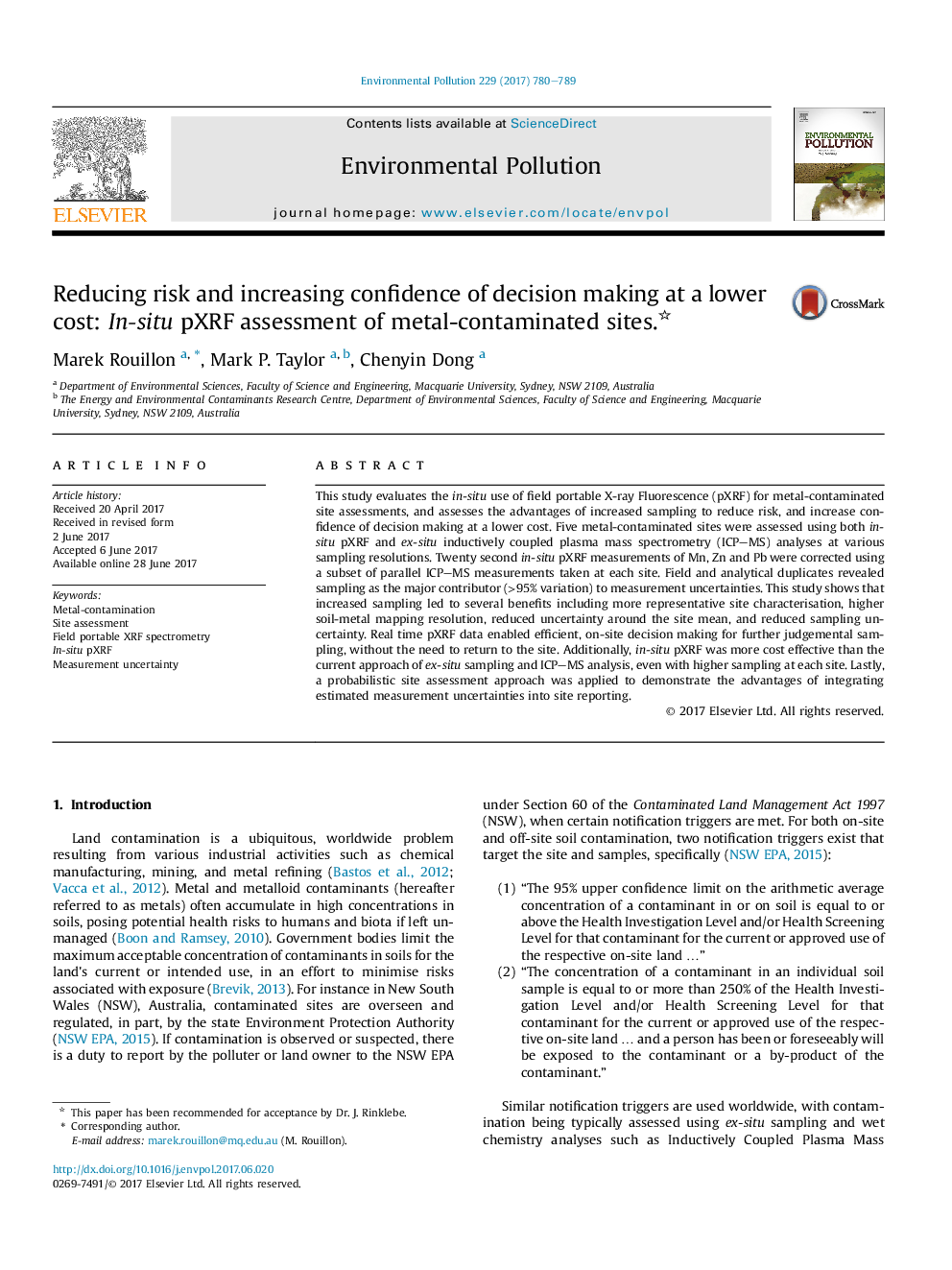| Article ID | Journal | Published Year | Pages | File Type |
|---|---|---|---|---|
| 5748825 | Environmental Pollution | 2017 | 10 Pages |
â¢Metal-contaminated sites were assessed using in-situ pXRF and ICP-MS methods.â¢20 s in-situ pXRF measurements were corrected using parallel ICP-MS data.â¢Sampling contributed >95% error towards overall measurement uncertainties.â¢Real-time pXRF data enabled efficient judgemental sampling of contaminated hotspots.â¢Increased sampling by pXRF lowers the risk of site misclassification.
This study evaluates the in-situ use of field portable X-ray Fluorescence (pXRF) for metal-contaminated site assessments, and assesses the advantages of increased sampling to reduce risk, and increase confidence of decision making at a lower cost. Five metal-contaminated sites were assessed using both in-situ pXRF and ex-situ inductively coupled plasma mass spectrometry (ICP-MS) analyses at various sampling resolutions. Twenty second in-situ pXRF measurements of Mn, Zn and Pb were corrected using a subset of parallel ICP-MS measurements taken at each site. Field and analytical duplicates revealed sampling as the major contributor (>95% variation) to measurement uncertainties. This study shows that increased sampling led to several benefits including more representative site characterisation, higher soil-metal mapping resolution, reduced uncertainty around the site mean, and reduced sampling uncertainty. Real time pXRF data enabled efficient, on-site decision making for further judgemental sampling, without the need to return to the site. Additionally, in-situ pXRF was more cost effective than the current approach of ex-situ sampling and ICP-MS analysis, even with higher sampling at each site. Lastly, a probabilistic site assessment approach was applied to demonstrate the advantages of integrating estimated measurement uncertainties into site reporting.
Graphical abstractDownload high-res image (297KB)Download full-size image
